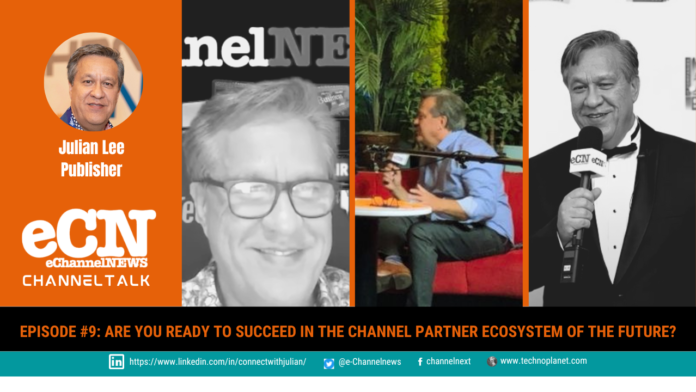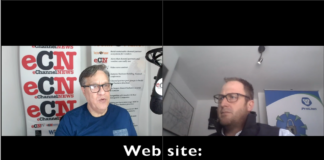The world’s problem isn’t that it’s so unpredictable, but that it’s so predictable. It’s just a shame that when you see a scenario emerging in the future, you can’t easily prevent it from occurring.
Case in point, Russia’s War on Ukraine. We saw the precursor to it with Crimea. Months ago, it seemed more likely to happen. The US President clearly said it would happen. It happened. Impossible to prevent?
Carl Sagan predicted that information technology will dumb down humans while simultaneously introducing new problems (see https://www.youtube.com/watch?v=nGanLUnjoPI). His warnings went unheeded, and here we are now.
Climate change seems to be the next major problem that is presently being overlooked. Frances Edmonds, HP’s Head of Sustainability, spoke with me on the subject https://www.e-channelnews.com/masterchat-episode-14-sustainability/ Will we change the outcome?
Malcolm Gladwell discussed tipping points and the forces that ignite and snowball towards creating an outcome in one of his amazing books “The Tipping Point”. We are already experiencing the consequences of the last tipping point, which transformed the channel into a managed service and recurring revenue model (subscription and consumption). With the rapid inflow of non-traditional channel partners into the ecosystem, the channel is approaching another tipping point.
How will these new actors affect the present ecosystem if they do not think or behave like conventional channel partners?
The magic in the partner ecosystem is how you connect the “dots” between its members. The ability to build “downstream” (value-add) revenue and leveraging other members to support or open doors is key to the kingdom.
Here’s one example of how this could alter the game for MSPs.
Assume that a typical MSP is a member of about 50 separate vendor-centric partner ecosystems. Each ecosystem has thousands of partners. Thousands of ISVs, digital transformation experts, digital marketing agencies, accountancy companies, telecommunications providers, and developers will join the ecosystems tomorrow.
What effect will this have on the MSP?
All partners provide a variety of critical services to the end user, including digital marketing, business operations (ERP, CRM and RPA), digital transformation, internet connectivity, and accounting. The MSP continues to provide a wide range of technologies such as cyber security, productivity apps, Cloud migration, data management, computer equipment, and so on.
Everyone is vying for a piece of the end customer’s cash and arguing why what they provide is important. In actuality, the end client requires it all. Each partner brings one piece to the table; yet, all must be linked and supportive of one another. Technologies simply cannot operate in silos!
A digital marketing firm must hire an MSP, MSSP, or SOC to assist with cyber security, as well as a VoIP partner to interact with the contact centre in order to handle leads and the buyer’s experience. The accountant needs a partner to provide security, performance, and productivity-related apps. To connect to the internet, everyone needs broadband from a telco.
Because no one partner can offer all of the moving elements, they must create their own supply chain ecosystem to provide the whole solution (Vendors can help a lot by certifying that the solutions do work properly on their platform).
The bottom line: Everyone is in some way DEPENDENT on one another in order to develop what the clients need.
As a result, established channel partners must begin cultivating connections with ALL of the new non-traditional partners entering the ecosystem in order to work on more projects. The permutations and combinations of these economic partnerships are endless. MSPs that excel in cultivating connections and collaborating with these non-traditional partners will be the most successful.
This new diverse ecosystem of “partners” represents the next generation of the channel ecosystems.
Understanding how to traverse and use various markets and ecosystems will be crucial. Some suppliers will assist their partners in connecting the dots, but don’t wait for that to happen. MSPs must figure out how to harness diverse vendor ecosystems on their own. It’s time for each MSP to create or fine-tune their supplier ecosystem and start hunting as a pack.
Many individuals, including myself, have written extensively on the future of the channel. I recently gave another 30-minute session at Barracuda’s MSP Day virtual event. We are doing all we can to keep our community informed. However, persuading people of the new channel in a digital-first economy is difficult. It takes time for people to trust and believe.
I’m interested in assisting MSPs, VARs, and ITSPs in getting ready for the new channel game. I am also interested in assisting suppliers in adapting their partner ecosystem before they get marginalized (Vendors should also be cautious about being forced to join other vendor ecosystems and be subject to their terms and conditions).
I’m witnessing a lot of changes on the channel, and it’s becoming more complex. Getting it right and creating the necessary awareness to attract the best-fit partners will be critical for suppliers. On the plus side, MSPs will be able to leverage all ecosystems to build their company in unprecedented ways.
Simply start by gathering and digesting the necessary information. Get a clear picture of what’s going on so you can determine what YOU should do. Because everyone’s circumstances are unique, no one can truly advise you what you should do. You must do your homework.
Here are the top seven things that any MSP, VAR, or ITSP should do to prepare for this future.
- Attempt to streamline as much as feasible internally. There are various new tools available today to help MSPs accomplish things better, quicker, and cheaper! By simply simplifying processes, you may increase earnings, save time, and increase customer satisfaction. Employee unhappiness and exhaustion are also decreased, which benefits employee retention.
- Discover how your business practices really stack up. Benchmarking is now extremely easy and absolutely free! There are a few organizations that can help you. You can also visit www.bestmanageditcompanies.com to get your FREE confidential assessment and use the findings to help you determine what to do next.
- Look for fresh methods to develop your supplier network to help your firm flourish. Explore new types of partnerships with organizations you’ve never considered before, such as accountants, digital marketing agencies, digital transformation specialists, ISVs, developers, consultants, RPA vendors, IoT vendors, 5G vendors, Telcos, ERP vendors, sustainability partners, and others. The mix of alliances and how effectively you work with each to leverage will determine your degree of success.
- Consider how much you’re really worth. Get a complete examination from a reputable financial specialist. Determine your true value, then consider how the numbers affect your worth and search for ways to improve. You’ll have to exit your company at some point and you have three options: purchase, sell, or merge. There are several opportunities available from business owners who are about to retire and have no one to take their place.
- Enhance your own and your team’s skills. Learning is always a fantastic thing. With an ongoing learning mindset and support, your team will continually improve and outperform your competition. Offering ongoing learning is also a good way to retain employees.
- Social justice is a good thing. Make certain that your company’s goal and values go beyond just producing money. Consider including some social justice components, such as sustainability. Make a message that isn’t only about the bottom line. Make a concerted effort to positively impact your team, community, and world. It will also attract and keep new employees.
- Improve your digital and social game. Aside from being the major means of communication for the younger generation (who now account for almost half of all decision makers), it is also more simpler and less expensive than traditional ways. It’s also not as tough as you may assume. It’s time to go all-in on digital. Take it seriously, and your management must be there on the front lines. There will be no more hiding behind a desk.
If you just work on these seven areas, you should see the path light up to where you need to go. Vendors may also want to digest how more MSPs will be doing business in the future to better align themselves.Want 100X more insights for building business? Subscribe to eChannelNEWS.














